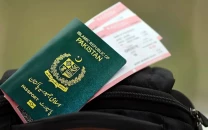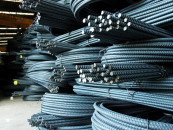Does growth supply drinking water?
The problem is that there are no official estimates of the provincial GDPs

pervez.tahir@tribune.com.pk
The estimates floating around are the personal research works of Qaiser Bengali, Hafeez Pasha, Wasim Saleem and Nadia Tahir — in chronological order. One can take one’s pick, but others may take it with a pinch of salt. There could even be fun, as we recently saw Imran Khan and Bilawal Bhutto claiming the highest growth for K-P and Sindh, quoting the same source!
While the political class and economists see growth rates as the winning trophy, the courts are showing great displeasure over the state of drinking water availability. Water-borne diseases form the major proportion of the overall burden of diseases. The higher the burden of disease, the lower the supply and productivity of work, which is the major source of personal as well as provincial/national economic growth.
The Pakistan Social and Living Standards Measurement Survey (PSLM) counts the main sources of drinking water in all provinces as tap water, hand pump, motor pump, dug wells and others. (Bottled water has not yet made it to the list). The last two PSLMs relate to 2014-15 and 2012-13. It is, therefore, possible to compare where the provinces were in the year before the present governments came into power and what they had done by the second year in power. Balochistan lags far behind even in the collection of data.

The use of tap water declined in all provinces. In Punjab, it declined from 22 per cent of the households to 18 per cent of the households. Although at a higher level of tap water use, the proportion of households depending on it declined in Sindh from 43 per cent to 41 per cent. K-P experienced the sharpest decline from 44 per cent to 33 per cent. Hand pumps continued to be an important source, though there was no change in the proportion of households using hand pumps. The proportions were 28, 34 and 12 per cent respectively for Punjab, Sindh and K-P. Dug wells are still a source of some significance. One per cent of the households accessed dug wells in Punjab in 2012-13, with no change in 2014-15. Sindh had a higher proportion at 4 per cent, which also has not changed overtime. K-P had the highest percentage of households depending on dug wells, i.e. eight per cent. In miscellaneous category of “others” as well, K-P topped the list at 18 per cent, with no change between the selected two years. Sindh came second at 10 per cent, again no change overtime. Only Punjab experienced an increase from six per cent of households to nine per cent.
The only category that registered an increase in all provinces was the use of motor pumps, up from 42 to 45 per cent in Punjab, nine to 11 per cent in Sindh and a jump from 18 to 26 per cent in K-P. The shift from tap water to motorised pumping has serious implications for groundwater availability.
Published in The Express Tribune, April 20th, 2018.
Like Opinion & Editorial on Facebook, follow @ETOpEd on Twitter to receive all updates on all our daily pieces.



1729685382-0/Untitled-design-(57)1729685382-0-208x130.webp)










COMMENTS
Comments are moderated and generally will be posted if they are on-topic and not abusive.
For more information, please see our Comments FAQ